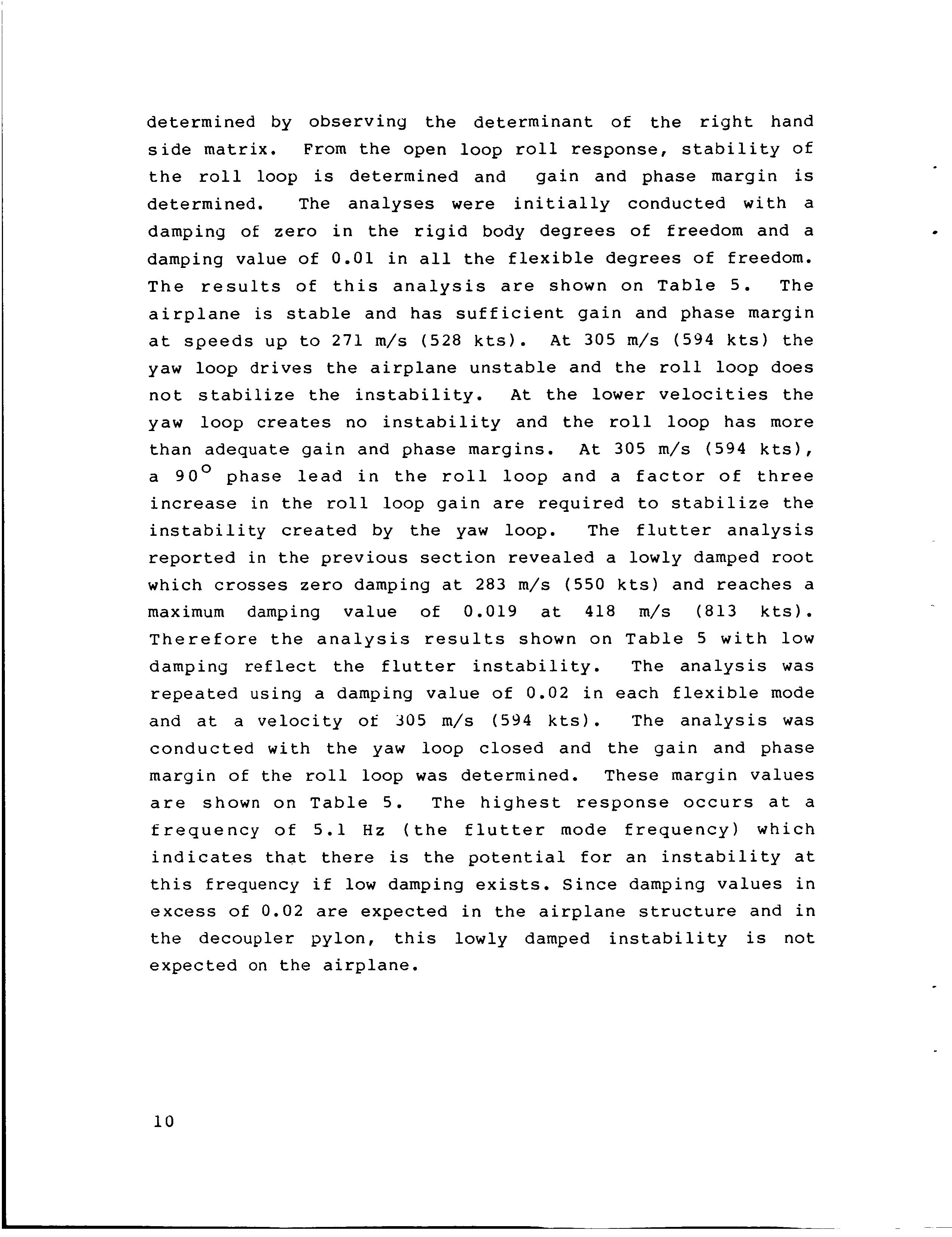
2 minute read
Aeroservoelastic Analyses
from NASA Technical Reports Server (NTRS) 19870001427: Design and fabrication of the NASA decoupler pylon
M - Static Preload Moment (oscillations occur about this moment). - Static Moment required to deflect store to
MO
Advertisement
breakout value; 678 N m (6000 in.lb). 61 - Amplitude of store pitch oscillation. 80 - Pitch Angle at which store breaks friction (0.03804 degrees). 6 - Describing function (6 = Ke/K) where Ke is the equivalent linear spring constant of the nonlinear spring.
The analysis indicates that there are small changes in the flutter - speed as a function of large variations of the ratio M/Mo. This is due to the small angular range over which the pylon is below breakout.
Aeroservoelastic Analyses
Symmetric and antisymmetric aeroservoelastic analyses were conducted using the pylon simulation based on ground test data. Both analyses were made at a Mach number of 0.9 and at an altitude of sea level. The symmetric analysis was conducted with the pitch loop open. At 305 m/s (594 kts) at sea level the pitch loop has a large gain and phase margin. Since the pitch loop margins were large, the analysis was not conducted at additional velocities.
The antisymmetric analysis was conducted with the yaw loop closed and the gain and phase margins were determined from the open loop roll response. The analysis was conducted with the unsteady aerodynamic terms computed for a Mach number of 0.9. The gain and phase margins were determined for a series of velocities. By conducting the analysis with the yaw loop closed, the stability of the yaw loop is
9
determined by observing the determinant of the right hand side matrix. From the open loop roll response, stability of the roll loop is determined and gain and phase margin is determined. The analyses were initially conducted with a damping of zero in the rigid body degrees of freedom and a damping value of 0.01 in all the flexible degrees of freedom. The results of this analysis are shown on Table 5. The airplane is stable and has sufficient gain and phase margin at speeds up to 271 m/s (528 kts). At 305 m/s (594 kts) the yaw loop drives the airplane unstable and the roll loop does not stabilize the instability. At the lower velocities the yaw loop creates no instability and the roll loop has more than adequate gain and phase margins. At 305 m/s (594 kts), a 90° phase lead in the roll loop and a factor of three increase in the roll loop gain are required to stabilize the instability created by the yaw loop. The flutter analysis reported in the previous section revealed a lowly damped root which crosses zero damping at 283 m/s (550 kts) and reaches a maximum damping value of 0.019 at 418 m/s (813 kts). Therefore the analysis results shown on Table 5 with low damping reflect the flutter instability. The analysis was repeated using a damping value of 0.02 in each flexible mode and at a velocity of 305 m/s (594 kts). The analysis was conducted with the yaw loop closed and the gain and phase margin of the roll loop was determined. These margin values are shown on Table 5. The highest response occurs at a frequency of 5.1 Hz (the flutter mode frequency) which indicates that there is the potential for an instability at this frequency if low damping exists. Since damping values in excess of 0.02 are expected in the airplane structure and in the decoupler pylon, this lowly damped instability is not expected on the airplane.

10










